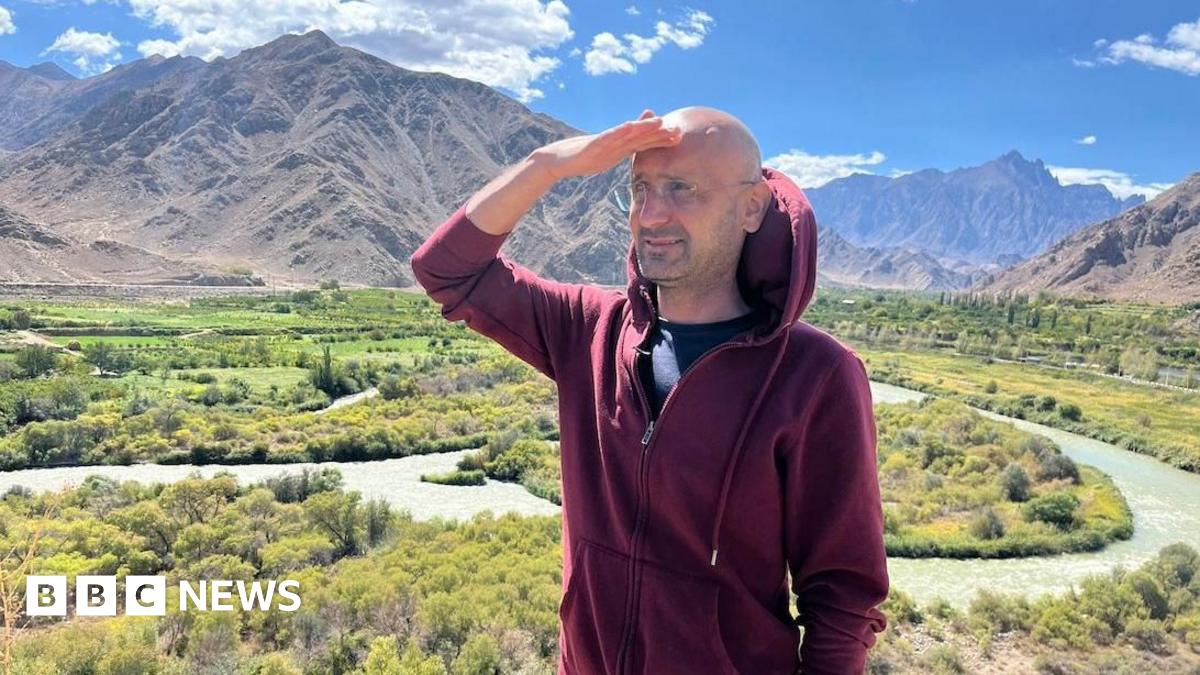US mediation became possible because of Russia’s weakened position in the South Caucasus.
For years, the Kremlin worked towards re-opening the route that now bears an American president’s name.
And although Russia’s proposal for its FSB border troops to guard the future road has been rejected, they still patrol the stretch of the Armenia‑Iran border that has been chosen for the Trump route.
As the BBC filmed on the ground, a Russian FSB patrol vehicle pulled up in front of us. A young man in uniform asked us about a drone filming the border from above. We said it was not ours and the Russian patrol moved on.
Armenia’s Syunik region is also a key hub for its exports, and businessmen and trucks from Iran are a familiar sight. Iranian construction companies are building a new bridge that will cross the future Tripp.
The Aras River that separates the Islamic Republic and Armenia is the very line the route is set follow.
It is unclear how the US and Iranian companies will co-exist in Armenia, given recent US involvement in the Israel‑Iran war.
A senior adviser to Iran’s supreme leader threatened to turn Tripp into “a grave for Donald Trump’s mercenaries”, but Iran’s government has been more measured.
Iran is a friend and neighbour to both Caucasus nations and Armenia has told Tehran the project is not a threat to its interests.
